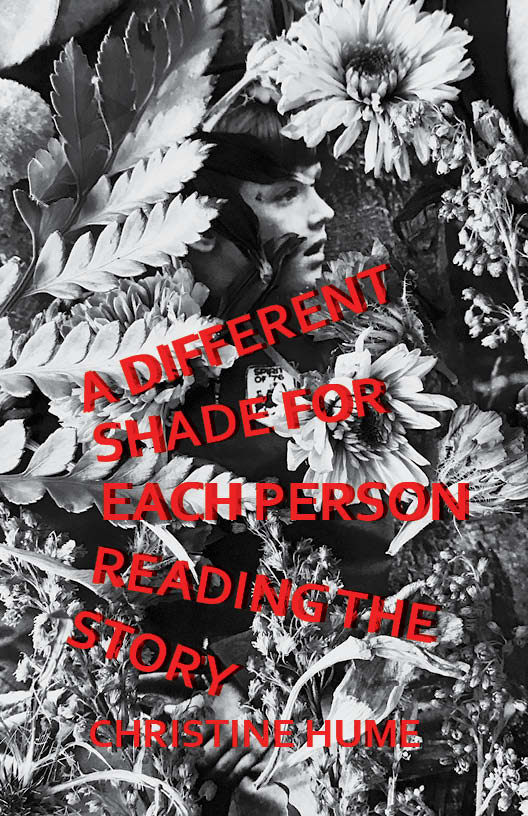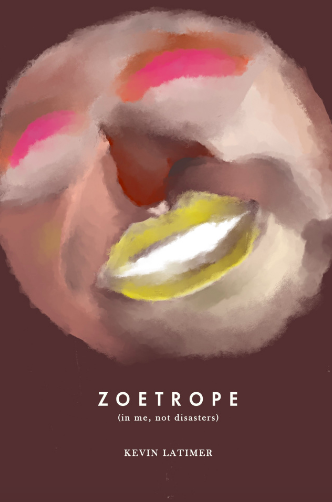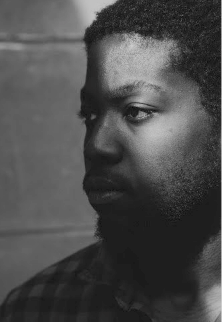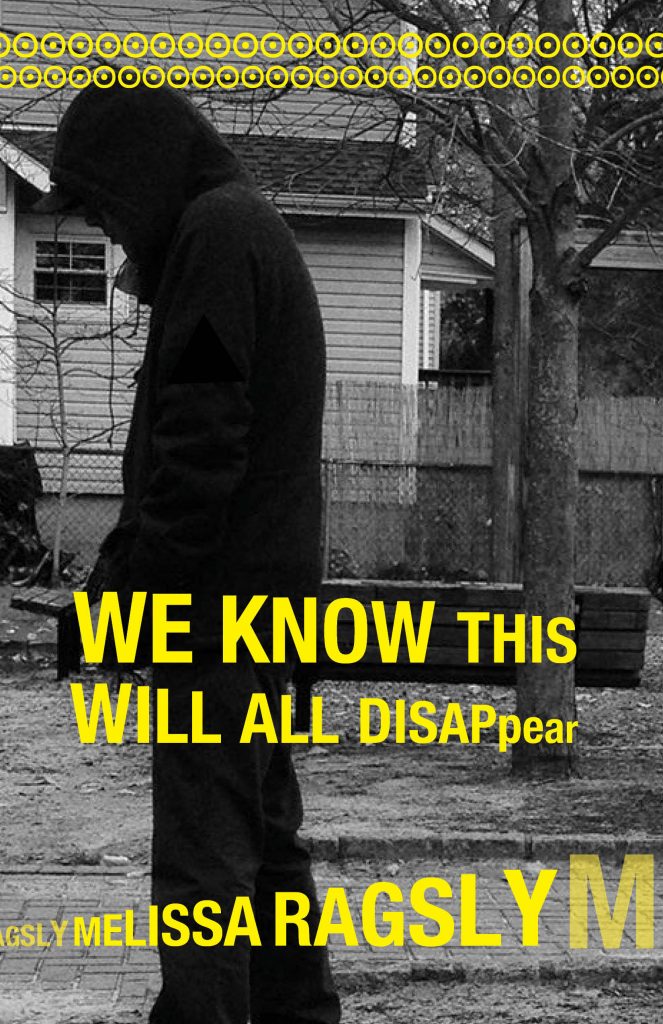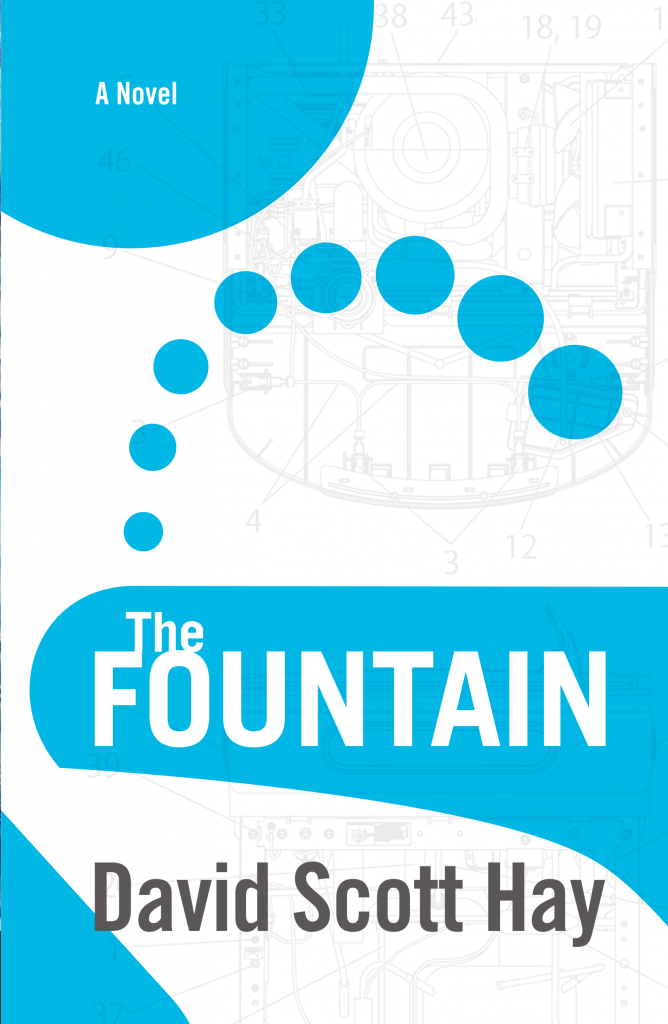
Damien Roos, an incredible part of our PANK family, sat down to talk to David Scott Hay about his novel, The Fountain.
Intro: In David Scott Hay’s new novel, The Fountain, a water fountain at the Museum of Contemporary Art in Chicago magically grants drinkers the ability to create exactly one masterpiece of their own, a gift that carries dire consequences. The Fountain is a mad dash, meta and epic and loud. Hay shreds fine art culture and all its pretensions, sounding the call for true artists to do the very thing they were born to do: Create.
His small press debut, The Fountain is scheduled for winter release by Whisk(e)y Tit, a publisher proudly “committed to restoring degradation and degeneracy to the literary arts”. It will also be translated and released in Russia in 2022. Order now at The Fountain | Whisk(e)y Tit (whiskeytit.com).
In this interview, we cover a range of topics such as authenticity in art, drugs as a creative crutch and Ted Lasso. Also, we drink.
Damien Roos: I decided on Yuengling Black & Tan for this interview. It’s sort of a November go-to for me. I assume you’re drinking the patented Old Fashioned you mention in your author bio?
David Scott Hay: Yes, with less of the simple syrup in this batch. I’m actually drinking it out of a Whiskey Tit glass. Swag from the publisher. Can you see the logo?
DR: Oh, that’s nice. Yes, the W logo.
DSH: When I pitched Miette, the editor of Whiskey Tit, my first line was, “If we end up working together, I’m going to get a tattoo of your logo.” And then I flew out to AWP (Association of Writers and Writers Programs) to meet her. This was just a year and a half ago, right before everything got locked down. And Miette was like, “Where’s the tattoo?” and I was like, “Where’s the book?”
DR: [laughs]
DSH: I haven’t gotten the tattoo because the book hasn’t come out yet.
DR: Well, as a read, The Fountain is the sort of book in which you can really sense the author’s glee. It seemed like you had a lot of fun writing it.
DSH: It’s funny that you say that. Lauren Groff was one of my thesis readers. She said the book felt like it was written with half-repressed glee, or something to that effect.
Yes, the book was joyfully written. I wrote it in secret, so I didn’t have any outside pressure, or whatever. At that time, I was building furniture, and Bob Bellio (the real-life protagonist in The Fountain) was across the hall creating sculptures. If I had an idea, I would write a chapter here and there, just exploring different characters. I would go 6 months without looking at the manuscript. Then I’d check out a show or something, or have an inspiring conversation, and I would go back and revisit. I’ve done a number of screenplays and plays and books, but the process always seems to be a little different every time and I think that’s what keeps me from feeling like I’m just hammering out something. Which is different than building furniture, where there’s a very linear process. You design it, you go get the wood, you bring it back, you do your rough cuts, you sand, you put it together, stain it, lacquer it, and do the final touches or whatever.
With a book, especially one that’s very scattershot, it’s like, “Okay, now I need to start connecting the dots and putting stuff together.” I finally gave some chapters to a good friend of mine and he was like, “Yeah, this is good, keep going.” And I got to a point where I realized it would take me another 10 years to finish the book. So I was like, “Oh, let’s go to grad school. I’ll already have the jump on things.” And then I went to work. Smoothed it out to where everything worked craft-wise, solved head-hopping issues and what not.
But in the initial stages, I just wrote freely. Whatever amused me and made me laugh, I wrote. There are so many inside jokes with friends of mine and snippets of song lyrics in that book. Some of my favorite opening lines from books are even buried in there. I won’t say which ones but…it just made me happy. My thesis advisor got through it and was like, “I know there are a lot of coded references in here. The ones I caught were amazing.” It really elevated the joy of it.
DR: And did you set out to do a takedown of art culture and commodification, or did the narrative just take on that message?
DSH: Narrative on this one. I was at the Museum of Contemporary Art and I swear to God, this is what happened. We’re walking along, checking out contemporary pieces. I mean, you talk about the old masters and stuff like that, “I got no beef.” But with contemporary art, I’m like, “Well, that is a big red cube, I can do that. My kid has done that…is it art?” So, it gets controversial. My whole litmus test is this: “If I can do it, it’s not art.” So, I’m looking at the red cube and going, “Well, that’s not art,” But then sometimes you get some stuff that really affects you. I saw one particular piece at the MCA, and that was kind of the inspiration for Tabitha’s piece in the book.
DR: What piece did you see that affected you?
DSH: It was a Lee Bontecou retrospective. I can’t remember a specific piece, but I know it was a combination of her mobiles and sculptural work. I don’t think I glanced at her ink work. But her mobiles… “Oh, this is actually crafted and it’s doing something and I’m physically drawn towards it. Her work was not easily dismissed.” And we continued along and came upon a water fountain with a little bubble man on it and the little dots going up for the water. You know, like the generic bubble people they use on restroom signs?
DR: Yes.
DSH: It was one of those inspirational moments. I’ve only had a handful of those, a lot of times it’s just craft and curiosity, hoping for discovery. But every now and then I get an idea that’s like, “Okay, so, what if people took a drink of water from this fountain and became these brilliant artists?” And then they had the Kiddie Art Exhibit area at the MCA too. Same thing. I saw it and was like, “Oh, wouldn’t it be funny if somebody actually created something in the Kiddie Art Exhibit area that rivaled whatever? What would that look like?” I couldn’t shake the idea.
DR: I want to talk about the water fountain. Like, the device itself. As the story goes, a drink from it grants a person the ability to create exactly one masterpiece, and then they die soon after. I read it as basically symbolic of the often destructive nature of artistic creation, the “staring into the abyss” aspect that sometimes manifests as addiction, depression, or dysfunctional living. Is my analysis on track?
DSH: Perhaps in hindsight. It was really as simple as just going off the premise. So, literally, it’s not so deep– the inspiration, after all, was the little bubble man drinking the water and a question of “What if?”. Write for story and cut for theme.
That said, it’s really a matter of authenticity. Ross Robert, who starts as a minor character and becomes a main one by the end, has a problem with being authentic with himself. And the dilemma with the water helps him realize that. His wife is like, “No, there’s no instant anything to successful art. Art has to be self-expression and it has to be authentic.” So, there’s a little bit of that whole “just add water” adage, right? Literally, just add water, Damien, and you can have an artistic masterpiece, and fame and fortune. But no, for him art is therapy and he’s working out something. He’s exploring something. And that’s what I did with The Fountain. It started off as a joke, like “What would happen?” It’s the high concept pitch, right? And then I have to argue every side; for, against, and their temptations and rationalizations.
DR: I believe one of the characters states that some artists use heroin, some are heavy drinkers etc. There’s that element of self-destruction.
DSH: All those junkies and drinkers. Yes, yes, yes. That’s the thing that makes me happy, getting to explore all these different sides of the argument. Tabby, the character you mention, came from the Midwest, never had an artistic bone in her body, drinks from the fountain, suddenly gets all this attention. Right?
DR: Yes.
DSH: This younger art critic is suddenly like her little boy toy and she’s got these art students worshipping her. She justifies it like, “Why is this any different than doing heroin or taking LSD or doing anything else? It unlocked my potential.” That’s her argument and, as a reader, you’re going to be like, “Well, yes, The Doors, I’m sure did a little of something and Johnny Cash sure did something too.” Her argument is that everybody needs a little help.
DR: Yes. I think it’s a compelling one, too. Maybe I took that thread and really ran with it in a way that you may have not even intended as an author. But that might also be because numerous pop cultural references you cite in the work would fall into that category.
DSH: And what does that say about a successful artist? They all had access. There’s no leg up. I mean, what if the Beatles hadn’t discovered drugs? And thank God Fentanyl wasn’t popular in the ’60s.
But that’s also the time, right? Hendrix was doing drugs. Everybody was doing drugs. The Stones were doing drugs. The Beatles were doing drugs. The Beatles were thugs pretending to be gentlemen. The Rolling Stones were gentlemen pretending to be thugs. It is what it is.
I mean I’ve written sober, I’ve written stoned, I’ve written drunk, I’ve written however. I’ve written while feeling sick, I’ve written sober. The difference in output is negligible. As long as I’m not assholing my way from point A to point B. But yes, you could argue it’s like a creative crutch. Right?
DR: Sure. Could be to some.
DSH: Of course, the water fountain is the ultimate crutch. The Beatles still have to sit together writing songs and they still have to figure out musical problems, even when they’re drinking or high or whatever…
DR: And they had talent, of course.
DSH: Tabby gives that as an excuse. But at the end of the day, she’s not drinking alcohol, she’s not getting high. She has no talent. No sense of craft. She took a drink of water and she made this thing. Suddenly, her whole life has changed.
And then she was unable to replicate it. It’s the Sophomore Slump at age 70. There’s that panic with her, like, “I need another drink of water.” Because in her mind, that’s what did it. She’s craving the drug for success and I guess digging deeper into the idea that some artists use drugs or stimulants or whatever as part of their process. That her rationale.
DR: I guess I’m trying to even go a little deeper into the rabbit hole with this question. But it’s not even necessarily, like, the performance enhancement aspect. That’s not even what interests me as much.
There’s the quote from Nietzsche about gazing into the abyss, and how the abyss eventually gazes back. I feel like for artists, writers and musicians, their work may take a toll mentally, spiritually, whatever, that people feel they have to alleviate chemically or something.
DSH: Are you talking about in terms of part of their process, or part of the recharge?
DR: I would say the recharge. But I guess it can spill into either category. I think for some people, like the musicians in that era that you were just discussing, it was a lifestyle thing, too.
DSH: I think for the people we referenced from the 60s drugs were certainly a part of their lifestyle. But they were still working their craft.
If you want to talk about the Eagles, or Jackson Browne, or the Laurel Canyon scene, or whatever, those guys were building a network. They were jamming with friends. They were learning. They were listening to records, trying to figure out how the fuck they did certain things.
For those guys, I think it was part of the lifestyle, maybe. Creatively, it was a baseline throughout. But those guys talked to one another, they hung out with one another, they showed each other chord progressions, they sang campfire songs. They were really in a culture that fostered creativity and sharing. And yes, I’m sure there was mutual recharging as well. There’s a lot of pressure on every level.
DR: And everyone approaches their craft differently, of course. Writers, for example, prioritize different aspects of storytelling.
DSH: Yup. People in Hollywood and MFA programs talk about, “Raise the conflict. Conflict, conflict, conflict.” And for me it’s, “No, establish the connection. Bolster the connection. Conflict doesn’t matter if there’s no connection. Don’t bother upping the stakes if there’s no connection.”
Sometimes the level of conflict I want is Ted Lasso or Peppa Pig. Which if you don’t have kids, you wouldn’t know Peppa Pig. It’s a show for very young grade schoolers featuring pigs with English accents. It’s all polite misunderstandings or things being misplaced. Sometimes that’s the level of conflict I want.
It’s a little “All right, let’s figure it out. Hey, we’re going to sing the song. Figure things out,” That’s what I want. Marvel’s like, “The known universe is going to be destroyed.” But with The Fountain it’s like, “Oh, it comes down to personal choice and whatever. I say that knowing it has apocalyptic undertones.” Do you watch Ted Lasso?
DR: Everyone’s asking that. I guess I need to get around to it.
DSH: It’s very fun. It’s very heartfelt. But the conflict is very low. It’s just navigating relationships, hurt feelings and all that. If you have the connection, you can have that low-level conflict seem big. Then any conflict, whether it’s a misunderstanding or somebody’s ignoring somebody, it gets heightened emotionally.
DR: Let’s go ahead and move to Bill Hicks, who you mention in this book. He was railing against over commodification and “brand culture” back in the 90s, when the idea of selling out was an actual problem that artists considered. This might be why I ultimately read your work as precisely the dystopian nightmare that Hicks seems to be warning us about.
DSH: I think in retrospect, that works. I don’t know. Consciously, I wasn’t trying to do it. Again, it was this kind of exploration of the premise.
DR: Retrospect would be fine. I mean, it’s a very dystopian novel for anyone who’s involved in the arts. It’s kind of frightening, right?
DSH: Well, there is the commodification of the water, of course. And the curator of the MCA doesn’t know how it works. He doesn’t even care how it works. He knows you can only get one masterpiece out of each person who drinks. He’s not curious. That’s a big Ted Lasso thing, being curious. And the curator is not. He just knows this is good for the museum and good for his pockets. And later while the character of B is presented with a great financial opportunity, any sense of selling out is completely flooded away by the freedom the windfall would provide. He’s done with his war.
In regards to Bill Hicks, I always liked his joke about Willie Nelson selling out, and he’s like, “That’s okay. He owes the IRS a $100 million. He can cash in. Willie is given a free pass because he’s Willie fucking Nelson.” I love it.
DR: So, let’s get some insight into how you craft your characters. I notice for example that the antagonist critic Duckworth shares the same affinity for antique typewriters that you express in your bio. Likewise, the loveable badass Jawbone apparently suffered a similar miter saw accident as yourself. Do you believe there are pieces of writers in all the characters they create?
DSH: Yeah. Part of it is laziness, I guess. Part of it is also that I’m a big fan of The Conversations: Walter Murch and the Art of Editing Film by Michael Ondaatje. It’s such a great book. Michael Ondaatje, a not-too-shabby writer, interviews Walter Murch a few times over. It’s one of the few books I have. It’s dog-eared. I got Post-it notes everywhere in it.
A lot of writers are like, “Oh, I can’t read your book right now because I’m writing and I don’t want it to influence me.” I adopted that for a while. Walter Murch was like, “No, no, no. These are spark points.” His dad was a painter and would lay out canvas in their New York apartment hallway. So, all these people would actually step and then walk on his canvas and then he would pick up the canvas and he would paint but he would still have the footprints of people on it. He talked about spark points and was like, “When I’m editing, I watch everything, I listen to the radio. If I hear a jingle that’s got a weird rhythm, I’ll try that in the editing.” He allows his outside world to influence him in terms of art at that moment. For me, that was really freeing.
So, I was like, “Yeah, I’m going to give Jawbone my finger thing.” Because I lost the tip of my finger in a chop saw accident, right? I’m going to give her that because that’s something that happened to me. I can certainly describe how it happened. Same with the chicken fried rice incident. But the old saying is “just because it happened to you doesn’t mean it’s interesting.” So how do I make that interesting and serve my story?
So, in The Fountain, every character has something that happened to me and/or a feature I thought was interesting or I had done a deep-dive into.
DR: Well, tell me this, while we’re still on the topic of characters. I’m curious to know: Ross Robards’ character is inspired by Bob Ross, I assume?
DSH: Uh-huh.
DR: Yes. Okay. And how did that idea come about?
DSH: Twenty years ago, I saw a stand-up comic who did a bit about Bob Ross being a Vietnam Veteran with PTSD. And he did a little 3-minute bit. It wasn’t super funny. My dad’s a Vietnam Vet. But the way he did it stuck with me for so long and every time I saw Bob Ross I was waiting for him to go off his tit. And 20 years later I needed an example of a commercially successful artist for my novel. I need somebody who has done the work and been successful. Right?
DR: Yes.
DSH: And Bob Ross seemed to be the most generic successful artist. I was like, “Okay, I’m going to make him Bob Ross. It’s going to be Ross Robards. I’ll change the name into something less obvious.” Which I never did.
DR: So, you basically stuck one of those disguises on him with the glasses and the fake nose thinking we wouldn’t know the difference.
DSH: Yes, I Grouched him. So, it’s also, “Okay, that’s my character, what’s his reaction of the things that are going on? What’s his backstory? What’s his point of view?” And Ross is the commercially successful artist and fuck him for having had success. But in writing him I realized he probably has the strongest artistic point of view of anybody in there. Jawbone kind of equivocates about the water and Ross is like, “No. Art is about what comes from within, it’s about working out whatever problems you have, and it is an outlet.” I mean, he is a stronger point of view character. He doesn’t compromise his point of view about art. He digs his heels in and, actually, his point of view becomes stronger. So, that pleased me because he wasn’t becoming a joke character.
DR: Probably my favorite question The Fountain presented concerned the value of the artistic end versus the inherent worth of the artistic process. And I know it’s something that you’ve talked a little bit about. And so, basically, a drink from the fountain is like the ultimate hack for hacks, allowing anyone to produce one masterpiece before the water kills them. I’m kind of curious to hear your direct thoughts about that question too. Process versus pure end result. Can’t beauty maybe just sometimes be easy?
DSH: Yes. Beauty can be easy. Like a dandelion or rose or nature. It can stimulate afterward. But we also know that’s evolution, the green fuse, that it takes time to get to that particular point. Writing The Fountain was a process. I came up with a premise and I explored it. And I’d gone through an MFA program and bolstered my craft and really focused on how to fold the story back in so it became coherent and cohesive. Connections, right?
But, sure, art can be effortless too. I can’t imagine that Jackson Pollock towards the end of his life was really stressing over those last paintings. I mean, somebody did a Red Cube at the MCA. Not a lot of talent is involved. Still, it’s kind of under the shield of art. Right? Everything is art. It can be art. And it’s like, “Well, come on.” To me, art always needs to have a little bit of craft behind it. Even if we’re talking about a rose or a dandelion. There’s a line in Rian Hughes’ XX that gob smacked me. This SOB nailed it in one sentence: “In short, she saw that there was an art to Art, and that it was not something magical or transcendent, but a craft, and good art – the type that could really move you, that you felt with your diaphragm rather than your intellect – was simply the endgame of being very good at your craft.”
DR: I figure this is probably a good one to end on. I found it funny how Jawbone and B so often express the ultimate anxiety of any artist, the worry that they are frauds, doubting their own authenticity as artists. I wonder if this is something that you’ve felt yourself and if it’s a feeling that haunted you while writing the book.
DSH: No, no, no. Well, maybe sometimes a fraud. I did Chicago Theater and I know so many actors and playwrights I talked to had that feeling of, “I’m a fraud and they’re going to find me out because I’m not Edward Albee.” Look, there’s only one Edward Albee, there’s only one Shakespeare. And there’s only one Jackson Pollock, and there’s only one whomever, right? I’m not competing with Tom Wolfe. I’m not competing with the Met. I think some people with talent and a dollop of self-awareness have a tendency to think, “If I’m not as good as the greats, then what I have to say doesn’t have value.” Again, I’ve never had that feeling where I’ve felt like a fraud. But I’ve had that moment where people have taken me seriously and I feel a certain responsibility to seem like I know what I’m talking about. To have answers and to present them in a coherent manner.
The closest to feeling like a fraud vibe comes from working on a first draft and that a little voice telling me it’s not as strong as my last polished work. Of course, it isn’t. But that’s my biggest creative fear, I guess, or obstacle. I don’t trust the process. I’m very suspicious of it, for whatever reason. But when I do it’s a very joyful process.
I think for some reason writers, and I’m projecting of course, with any kind of self-reflection or self-awareness feel like frauds because they feel like, as I said, if I can do it, it’s not art, right? Well, I wrote a book. I spent a lot of time on it, crafting it, making myself laugh. If people react well to it and connect with it, then there’s something of merit to it. I have to believe that whatever I’m working on has something of merit that people might connect with, maybe become a spark point.

David Scott Hay is an award-winning playwright, screenwriter and novelist who once lost the tip of a finger to a chop-saw in Chicago. He lives in Los Angeles with his wife, son, dog, chickens and a dozen typewriters. Find him on DavidScottHay.com.
Damien Roos is an MFA candidate in Fiction at The New School, a former editorial fellow at Guernica Magazine and a reader for PANK. His work has appeared in such outlets as New South Journal, The Master’s Review and Gravel. He lives in New York City with his wife and bluenose pit bull. damienroos.com
![[PANK]](https://pankmagazine.com/wp-content/themes/pank/assets/images/pank-logo-large.png)

